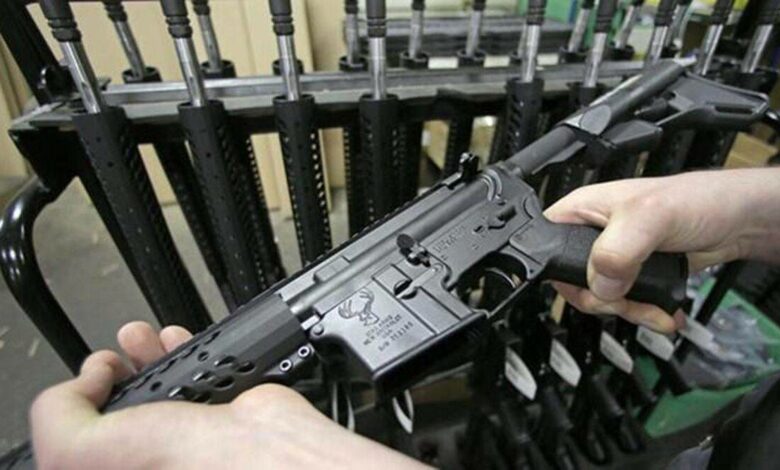India has changed arm supplier preferences over the last century

The choice of arms trade partners made by the Indian subcontinent has changed frequently over time simply because the country prefers to not depend on its old arms trade partners like Russia. India spends around 15% of its GDP (Gross Domestic Product) on the accounts of the global arms import and around 2.3 % on defence. India decided to equip the second largest armed forces in the current year for 64.4 billion dollars.
Some of the largest suppliers of arms to India in 2020 were the United States of America (USA), South Korea, Israel, France and Russia, as reported by the Stockholm International Peace Research Institute (SIPRI) which analyses the volume of international transfers of weapons using trend indicator value (TIV), a common unit for comparison. Meanwhile, the new arm exporting countries such as Brazil, South Africa and South Korea have also occupied a major share of the Indian arms segment.
The New trend in the imports of arms by India
India is trying very hard to lower down its dependence on Russia in the terms of arms. Russia’s percentage of arms exports witnessed a drop of 22% due to the cut off in arms imports made by India. There was a drop of around 33% of the arms imports in India between 2011-15 and 2016-20.
On a macroeconomic scale, Russia was the most affected country by the cut off made by India even though 46% of Indian imports of US arms also fell during the same span of time. On the other hand, Indian imports from France have increased. Interestingly, only three countries account for 59% of total French arms exports, namely India, Egypt and Qatar. In the last 20 years, the highest arms exporters were the United Kingdom (UK), Israel, France, the United States of America (USA) and Russia.
Uzbekistan and South Korea were the two small countries that have been a part of India’s arm procurement journey. In the last 3 years, South Korea has increased its share of arms exports in India and since 2009 Uzbekistan has been the largest exporters of arms to India for three consecutive years.
India wants to be independent when it comes to Defence
Being the second-largest importer of arms in the world, India’s new aim is to become self-independent and minimize the import dependence on weapons. India has also set aims to modernize its military in the next five years with plans to spend around 130 billion dollars. The Indian government has also allowed private companies to participate in the industry of defence to provide impetus to indigenous manufacturing.
Shripad Naik, junior Defence Minister, replied to a question asked in Lok Sabha that 28 successful tests have been carried out by DRDO (Defence Research and Development Organisation) last year. Beyond Visual Range Missile System, 10-metre Short Span Bridging System, Indian Maritime Situational Awareness System (IMSAS), Heavy Weight Torpedo (HWT) Varunastra, Border Surveillance System (BOSS), and Arjun Mk-1A are among the major weapons and other systems that DRDO has handed over to the armed forces.
According to Invest India, India is currently working on projects worth 7.3 billion dollars. All of the systems designed and built by the DRDO are manufactured by Indian businesses, both public and private. Advanced Towed Artillery Gun System (ATAGS), 10-metre Short Span Bridging System, Indian Maritime Situational Awareness System (IMSAS), Extended Range Pinaka System & Guided Pinaka Rocket System, Heavy Weight Torpedo (HWT) Varunastra, Border Surveillance System (BOSS), Arjun Mk-1A, and others are some of the systems produced by such collaboration in the last year.
The India-United States of America Joint Technology Community, the Indo-Israel Management Council, the India-Russia R&D Subgroup, the India-Singapore defence technology steering committee, the India-UK steering committee, and the India-Korea steering committee are among the DRDO’s international partnerships.
Between the months of March and December of the year 2020, India exported defense equipment worth 780 million dollars and on the 3rd of February , 2021, the Defence Research and Development Organisation (DRDO) published its new list of export equipment, which included 19 aeronautical systems, 27 electronic and communication systems, 10 life protection products, 4 microelectronic devices, 41 armament and combat systems, 4 missile systems, 28 naval systems, 16 nuclear, biological, and chemical equipment NBC, and 7 other materials.
The government has developed policies to increase defense exports and meet its next five-year target of $5 billion. It has also allowed 100 percent foreign direct investment (FDI) in the defence industry to encourage the rapid growth of defense manufacturing infrastructure in the domestic boundaries of the country.




